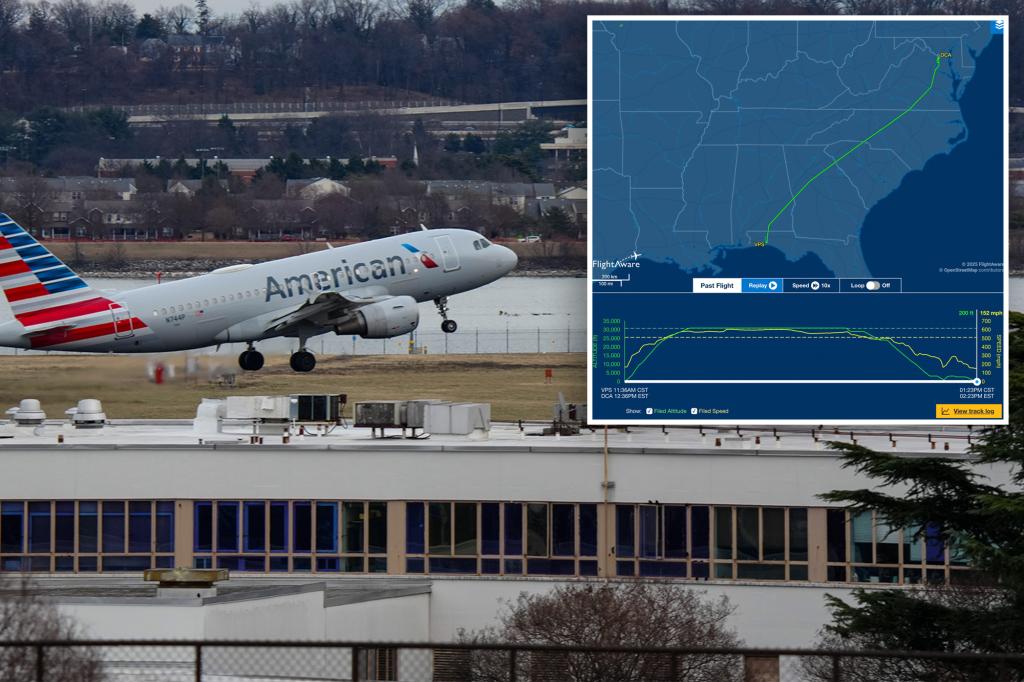The airspace surrounding Ronald Reagan Washington National Airport (DCA) experienced a series of near misses in the days leading up to a fatal midair collision, raising concerns about air traffic control procedures and potential staffing shortages. One incident involved American Airlines Flight 5210, traveling from Destin, Florida, to DCA on Tuesday, just 24 hours before the tragic accident. Passenger Marcus Webster recounted a tense moment during the flight’s final approach, as the aircraft was abruptly directed to abort its landing.
Webster, an experienced flyer, described the sudden maneuver as the plane, flying low over the Potomac River, dipped momentarily before sharply ascending back into the air. The pilot’s announcement, delivered with a noticeable stutter, informed passengers that air traffic control had intervened due to their proximity to another aircraft. This unexpected go-around, occurring at an altitude of just 1,100 feet, left Webster and other passengers shaken. The close call resonated even deeper the following day when news broke of the fatal collision between an American Airlines plane and a military helicopter at DCA. The incident reinforced Webster’s apprehension about flying into DCA, prompting him to book a return flight to a different airport.
Flight 5210’s near miss was not an isolated incident. Radar tracking data and subsequent reports revealed that another flight, Republic Airways Flight 4514, experienced a similar redirect on the same day. This flight, also approaching DCA, was forced to pull up at an altitude of 1,600 feet to avoid a potential collision. The two incidents, occurring within a short timeframe, highlight a potential pattern of close calls at DCA. Webster’s experience, coupled with the later tragedy, underscores the importance of thorough investigation into air traffic control operations at the airport.
The similarity between the near misses and the eventual collision raises crucial questions about the effectiveness of air traffic control procedures at DCA. Both Flight 5210 and Flight 4514 were directed to execute go-arounds at remarkably low altitudes, indicating a potential for human error or systemic flaws within the air traffic control system. The pilot’s apparent anxiety during the announcement on Flight 5210 further suggests that the situation was perceived as serious by the flight crew. The proximity of these incidents to the fatal collision necessitates a comprehensive review of air traffic control protocols to identify any contributing factors and prevent future tragedies.
In the aftermath of the fatal collision, concerns about air traffic control staffing shortages have come to light. Webster expressed his apprehension about the potential impact of understaffing on air safety, echoing broader concerns within the aviation community. The FAA, responsible for overseeing air traffic control, has faced scrutiny regarding its staffing levels and training procedures. The series of close calls at DCA, culminating in the tragic midair collision, emphasizes the urgency of addressing these concerns to ensure the safety of air travel. A thorough investigation into the circumstances surrounding these incidents is crucial to identifying any systemic issues and implementing necessary corrective measures.
American Airlines, in response to inquiries about Flight 5210, characterized the go-around as standard procedure, downplaying the significance of the event. However, the close proximity of the aircraft to another, requiring a last-minute maneuver at such a low altitude, raises questions about the airline’s assessment. The FAA’s lack of response to requests for comment further adds to the need for transparency and accountability in addressing the concerns raised by these incidents. A comprehensive investigation, involving all relevant parties, is essential to determining the root causes and preventing further incidents.
The near misses experienced by Flight 5210 and Flight 4514, occurring just prior to a fatal midair collision at DCA, highlight potential vulnerabilities in air traffic control procedures and raise concerns about staffing shortages. The experiences of passengers like Marcus Webster, coupled with radar tracking data, underscore the need for a thorough and transparent investigation. The FAA and American Airlines must address these concerns comprehensively to ensure the safety and security of air travel at DCA and across the nation. A detailed analysis of the events leading up to the tragic collision is crucial to identifying systemic issues, implementing corrective measures, and preventing future tragedies.

